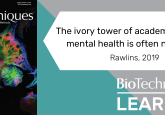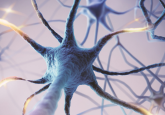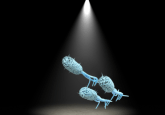Novel study maps emotion regulation in the human brain

A new study is among the first of its kind to identify brain regions unique to emotion regulation in the human brain, providing novel therapeutic approaches.
A recent study led by Dartmouth College (NH, USA) researchers, in collaboration with the University of Pittsburgh (PA, USA), has used computational methods and functional magnetic resonance imaging (fMRI) studies to reveal multiple emotion regulation systems in the brain, which can be potential clinical targets.
Emotion regulation describes the ability to manage and respond to an emotional experience. Because of the dynamic nature of human emotional responses and the critical role they play in all experiences, emotion regulation is fundamental to everyday functioning. It not only impacts how we feel but also our behavior and decision-making, and the inability to regulate emotions effectively is sometimes associated with mental health issues.
To find out more about the systems that control emotional regulation, the Dartmouth-led team used computational methods to examine two independent datasets of fMRI studies, which had previously been obtained by co-author Peter Gianaros (University of Pittsburgh).
To collect the data, an fMRI scanner was used to record participants’ brain activity whilst they looked at images that would, most likely, illicit a negative reaction, e.g. an image of a bloody scene. After the participants were presented with these images, they were asked to recontextualize the stimulus by creating new kinds of thoughts surrounding the image to make it less unpleasant. A neutral image was then presented followed by an aversive image. By examining the resulting neural activity, the researchers could identify the brain regions that were more active when emotions were regulated in comparison to when emotions were generated.

How neuroscientists are detangling the fear response
Individuals who have experienced life-threatening, stressful situations can later be prone to showing a fear response in the absence of a threat. This is called a generalized fear response and now scientists have mapped the neural circuitry underlying it.
The findings revealed that emotion regulation involves areas of the anterior prefrontal cortex and other higher-level cortical hierarchies whose roles in emotion regulation had not been previously identified with this level of accuracy. The results also demonstrated that the amygdala, the threat-related brain region responsible for negative emotions, responds to unpleasant stimuli the same way whether the individual is self-regulating negative emotion or not.
In addition, the team was interested in identifying the neurochemicals that interact with emotion regulation systems. Neurotransmitters, such as serotonin, are often therapeutic targets and may have a part to play in activating the ability to self-regulate. To assess whether this was the case, the emotion regulation brain maps from the two datasets were compared with neurotransmitter binding maps that had been attained from 36 other studies.
The findings confirmed that the systems involved in regulating negative emotions overlapped with certain neurotransmitter systems. “Our results showed that receptors for cannabinoids, opioids, and serotonin, including 5H2A, were especially rich in areas that are involved in emotion regulation,” senior author, Tor Wager (Dartmouth), stated. “When drugs that bind to these receptors are taken, they are preferentially affecting the emotion regulation system, which raises questions about their potential for long-term effects on our capacity to self-regulate.”
The findings of this study suggest that the more individuals can activate the emotion regulation-selective brain regions, the more capable they will be of experiencing something negative without letting it affect them personally. This builds on other research linking these areas of the brain to better mental health and may even aid in avoiding problems such as drug addiction.





